Witnessing red-tailed hawks mating in the wild is a rare and exhilarating experience for any nature enthusiast. On a crisp morning with perfect light and a gentle breeze, I ventured out hoping to spot short-eared owls but stumbled upon something even more remarkable: a pair of red-tailed hawks at an old nest site in Box Elder County, Utah. Movement in the nest and fresh nesting material signaled activity, drawing me closer.
What unfolded next was unexpected—a swift mating session on a lichen-covered rocky outcropping near the nest. These powerful raptors, known for their aerial prowess, displayed intricate behaviors during this brief but intense ritual. For bird lovers interested in aggressive wild bird behavior, such observations highlight the dynamic world of raptor interactions.
Discovering the Nest Activity
The female red-tailed hawk was the first to catch my eye as she left the nest, revealing new branches and materials indicating breeding preparations. Box Elder County’s rugged terrain provides ideal nesting spots for these adaptable birds, which often reuse sites year after year. This pair’s presence suggested they were in prime mating season, typically early spring when days lengthen and food is abundant.
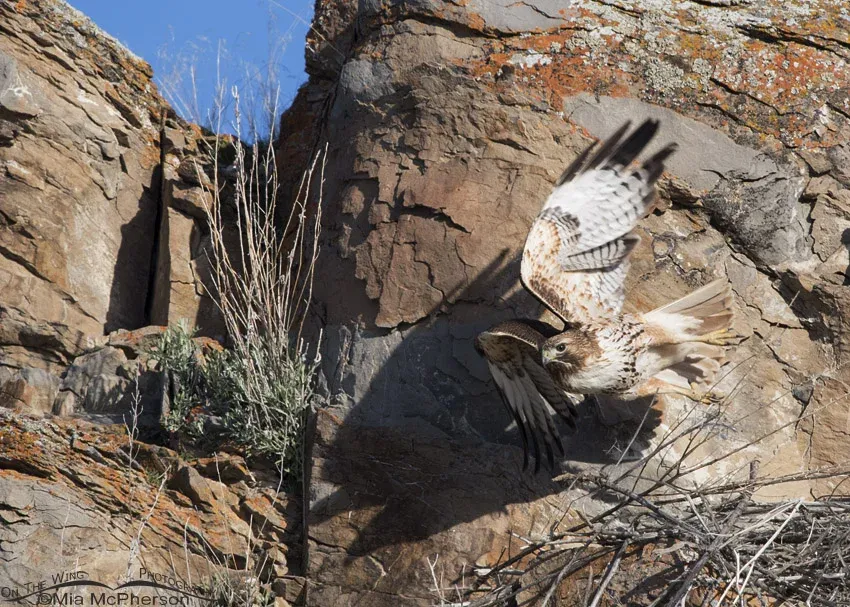 Female Red-tailed Hawk leaving the nest
Female Red-tailed Hawk leaving the nest
Soon after repositioning for better light, the male flew in, landing nearby. His approach showcased the fine barring on his tail feathers, a subtle sexual dimorphism distinguishing him from the female, whose tail lacks such detail but shares a thick terminal band.
The Male’s Approach and Mounting
The male red-tailed hawk glided toward the receptive female, who adopted a crouched posture on the stable rock surface. This positioning minimizes injury during copulation, a common adaptation in birds of prey. Both hawks maintained balance effortlessly, with the female’s body language signaling readiness.
 Male Red-tailed Hawk flying towards the female
Male Red-tailed Hawk flying towards the female
As he neared, the alignment of their forms created an illusion of a single bird, emphasizing their synchronized movements. The female’s tail fanned slightly, preparing for the cloacal contact essential for internal fertilization in raptors.
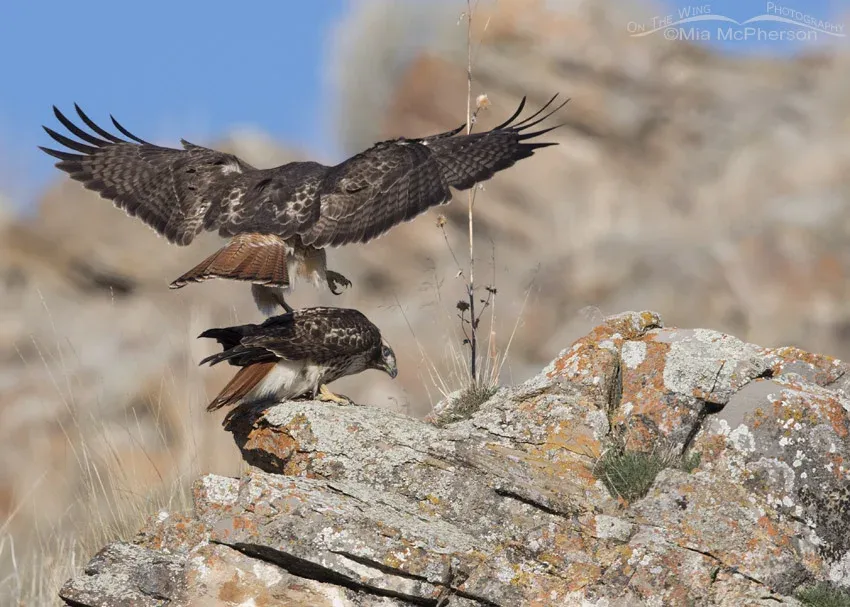 Male Red-tailed Hawk about to mount the female
Male Red-tailed Hawk about to mount the female
The Intense Mating Sequence
Mounting occurred swiftly, with the male gripping the female’s back using curled talons to avoid harm—a protective behavior observed in many raptor species. She remained crouched, supporting his weight as he positioned above her. This phase lasted mere seconds, typical for red-tailed hawks where copulation reinforces pair bonds multiple times daily during breeding.
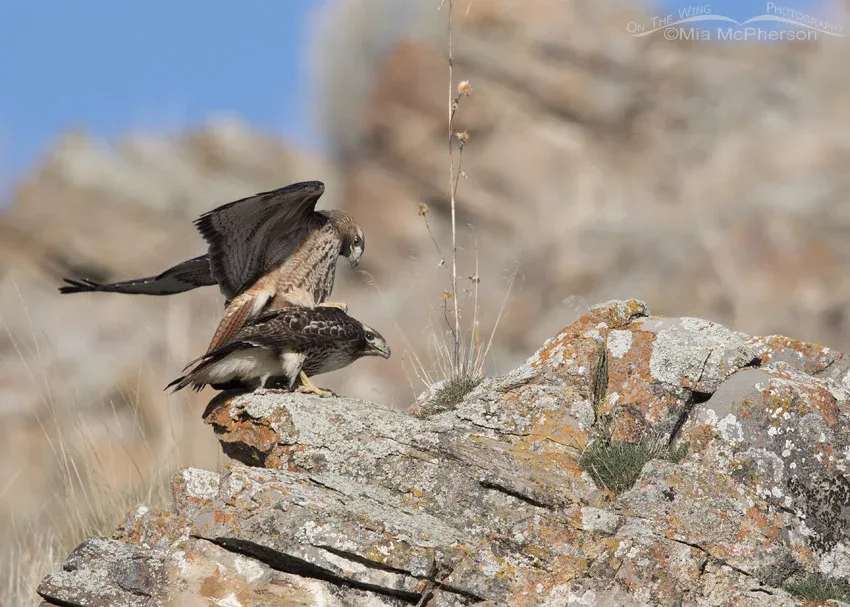 Male Red-tailed Hawk mounting the female
Male Red-tailed Hawk mounting the female
Throughout, the male emitted unique calls differing from his standard screech, possibly signaling completion or arousal. Though I couldn’t record it, such vocalizations are rarely documented but aid in territory defense and pair communication.
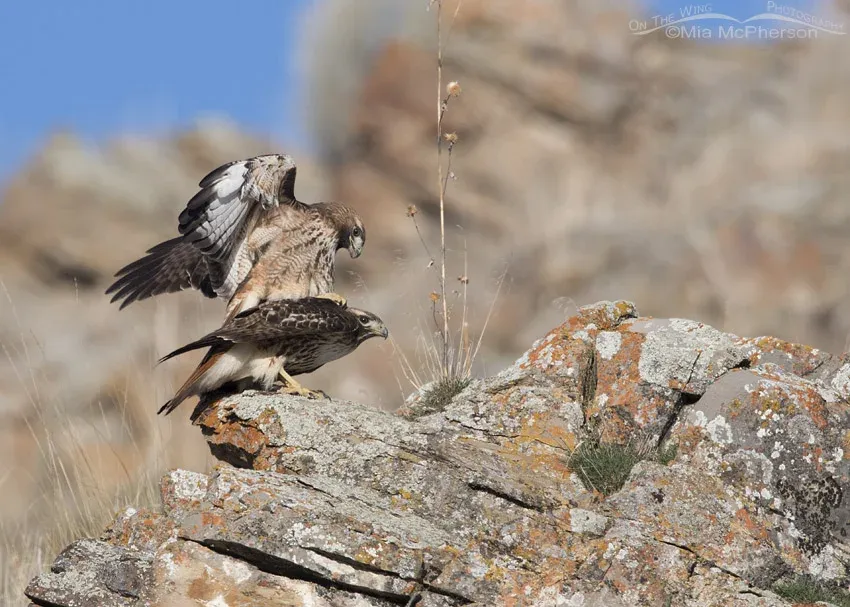 Mating Red-tailed Hawks in Box Elder County
Mating Red-tailed Hawks in Box Elder County
The female cleverly dropped her left wing to the rock, stabilizing them both amid the vigorous activity. Their tails aligned precisely—his above hers initially, then shifting—facilitating the transfer. Tail positions and wing adjustments are key to balance on uneven perches like this lichen-covered outcrop.
 Male Red-tailed Hawk calling while mating
Male Red-tailed Hawk calling while mating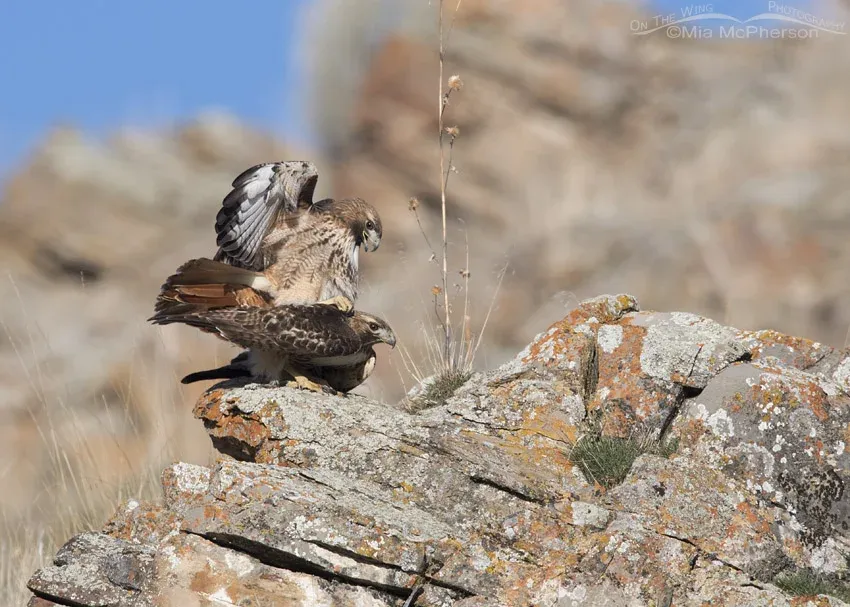 Red-tailed Hawks mating on a rocky outcropping
Red-tailed Hawks mating on a rocky outcropping
In one striking frame, the female’s tail appeared mismatched against the male’s body, while his tucked beneath her wing. These details reveal the precision of avian mating mechanics.
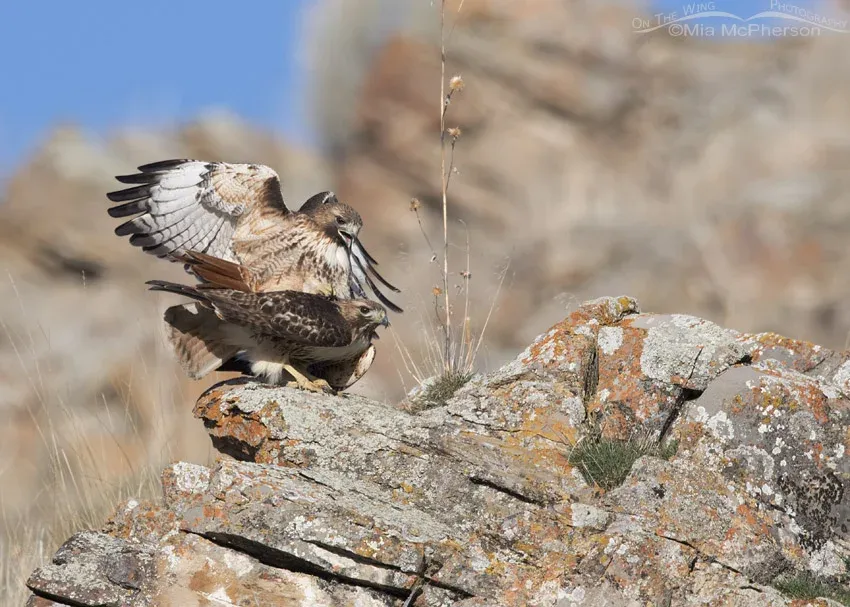 Red-tailed Hawks copulating
Red-tailed Hawks copulating
My Nikon D500 excelled here, handling over 200 high-speed burst shots without buffer issues, thanks to a fast Lexar XQD card. This reliability is crucial for capturing fleeting wildlife moments like red-tailed hawks mating, where every second counts.
 Pair of Red-tailed Hawks mating on lichen covered rocks
Pair of Red-tailed Hawks mating on lichen covered rocks
The male varied wing positions, spreading them slightly for stability, talons always fisted safely. By 30 seconds, fatigue seemed evident, longer than previous observations on less stable perches like junipers.
 Red-tailed Hawk pair on the rocks
Red-tailed Hawk pair on the rocks Copulating Red-tailed Hawk pair
Copulating Red-tailed Hawk pair
Her fanned tail contrasted his hidden one, underscoring anatomical adaptations for efficient copulation.
 Red-tailed Hawk mating behavior
Red-tailed Hawk mating behavior
For insights into other raptor dynamics, check out peregrine falcon behaviour, which shares similarities in aerial and territorial displays.
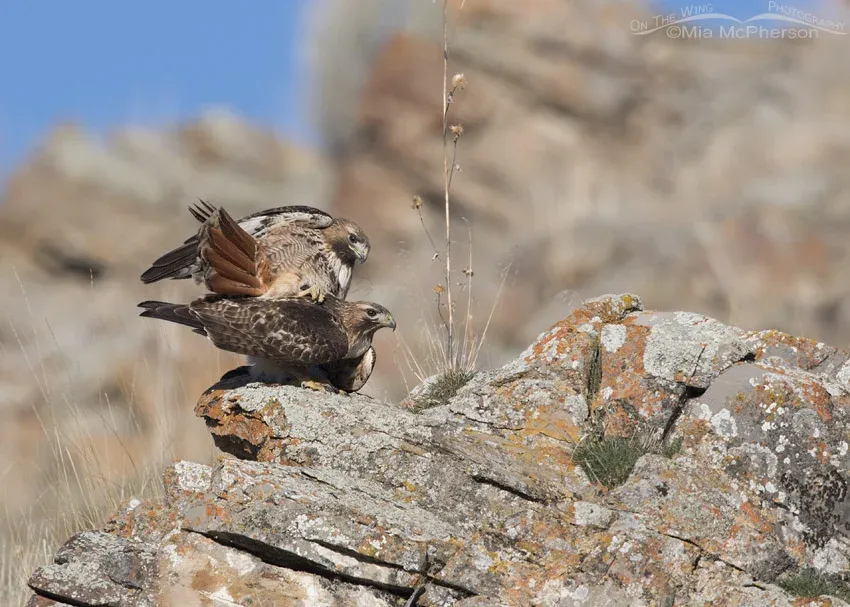 Red-tailed Hawks on the rocks
Red-tailed Hawks on the rocks
Dismount and Post-Mating
The male began dismounting around the 34-second mark, the female raising her tail skyward—a post-copulatory signal. They separated calmly, the session complete in this wild display.
 Red-tailed Hawk male beginning to dismount
Red-tailed Hawk male beginning to dismount Red-tailed Hawks after mating
Red-tailed Hawks after mating
Photographing red-tailed hawks mating reaffirms the thrill of wildlife observation. These events strengthen pair bonds, boosting nesting success—vital for species conservation amid habitat challenges.
In summary, this 34-second spectacle highlights the raw beauty of raptor reproduction. Patient fieldwork and reliable gear make such captures possible. For more on red-tailed hawks or raptor behaviors, explore our gallery and consult resources like the Cornell Lab of Ornithology. Share your sightings in the comments—what’s your most memorable bird encounter?
